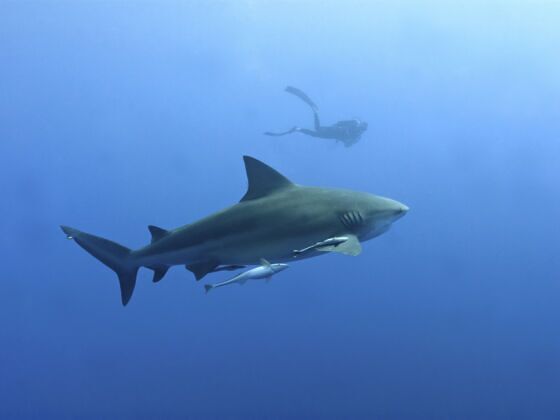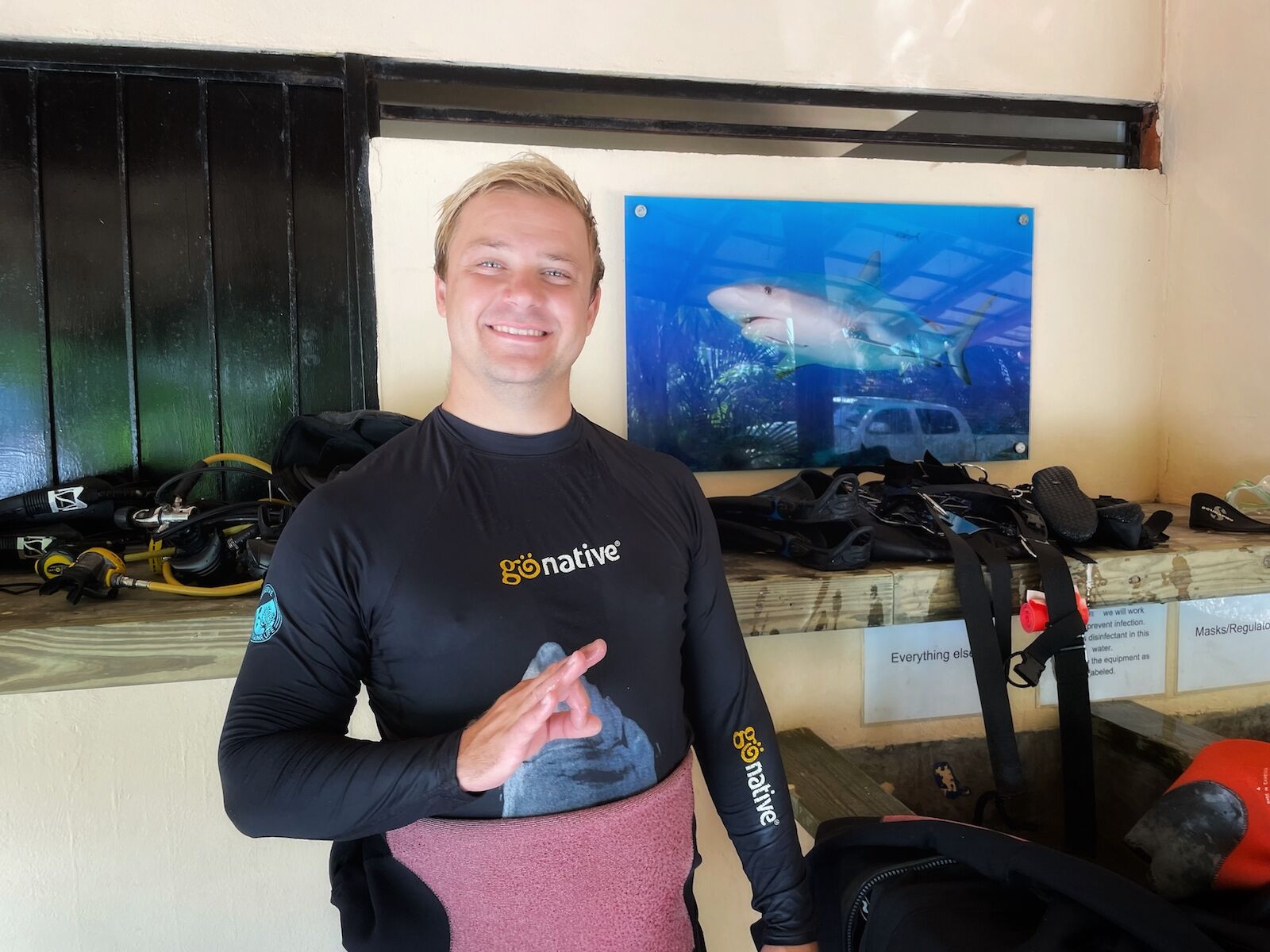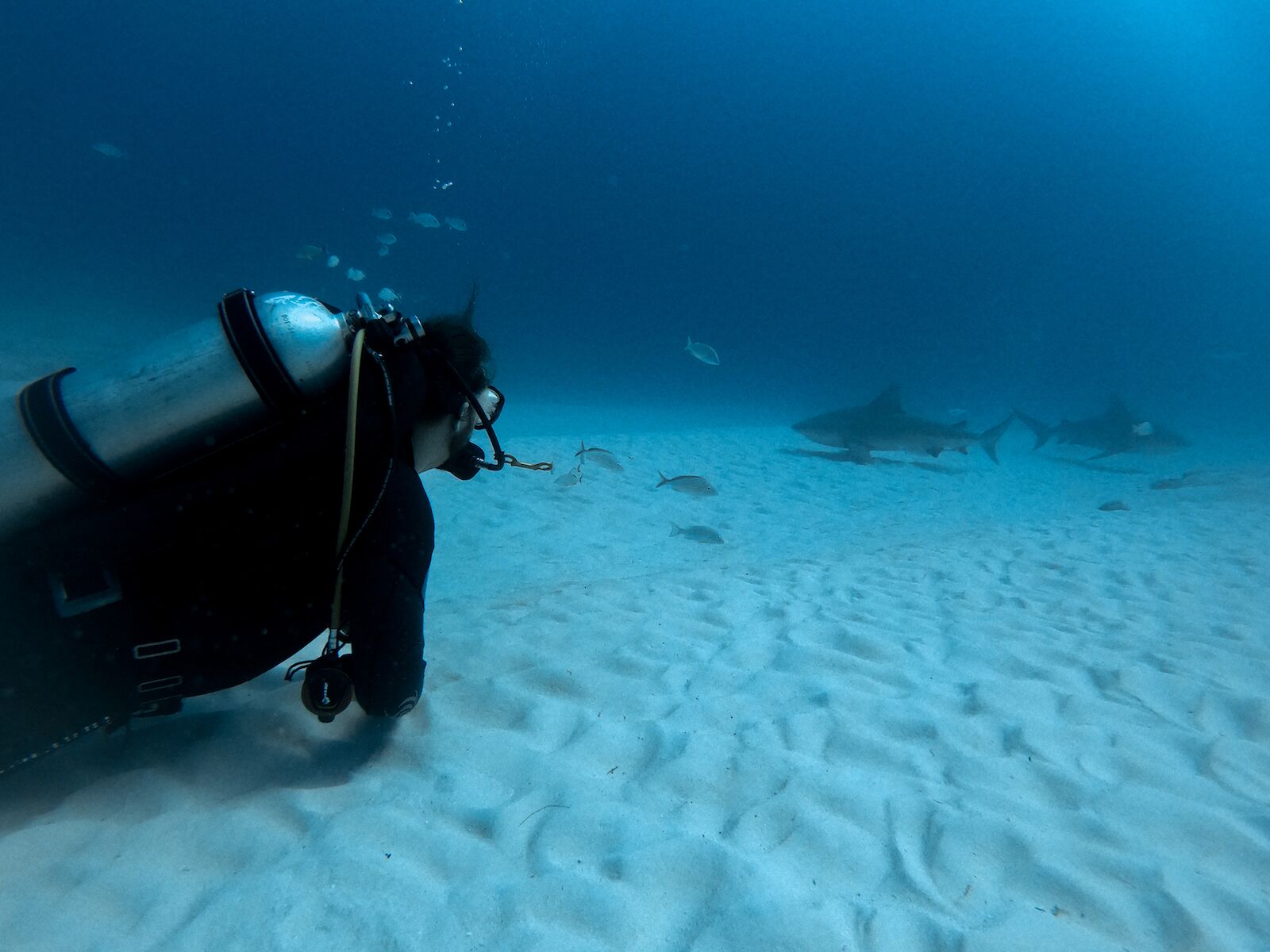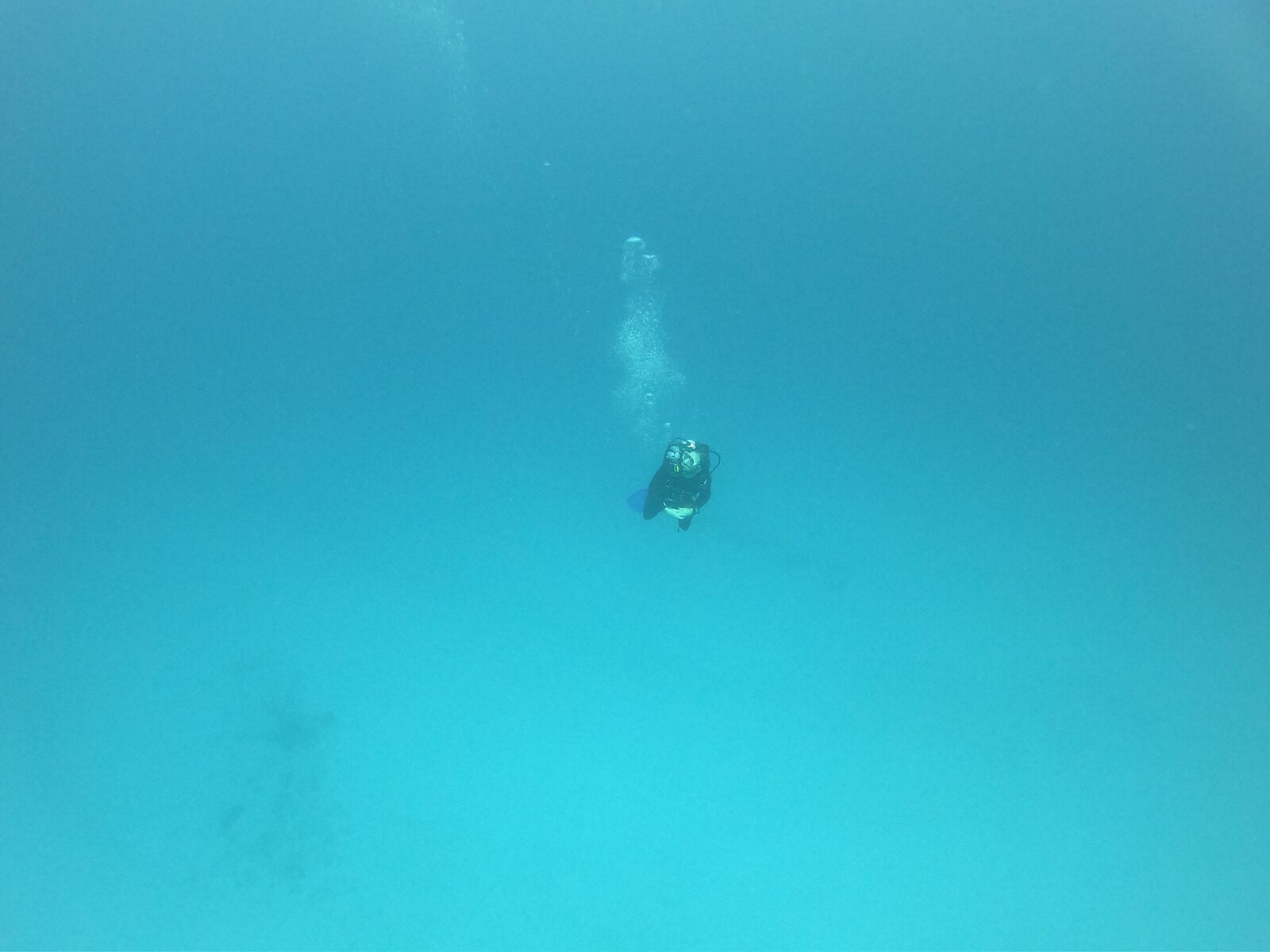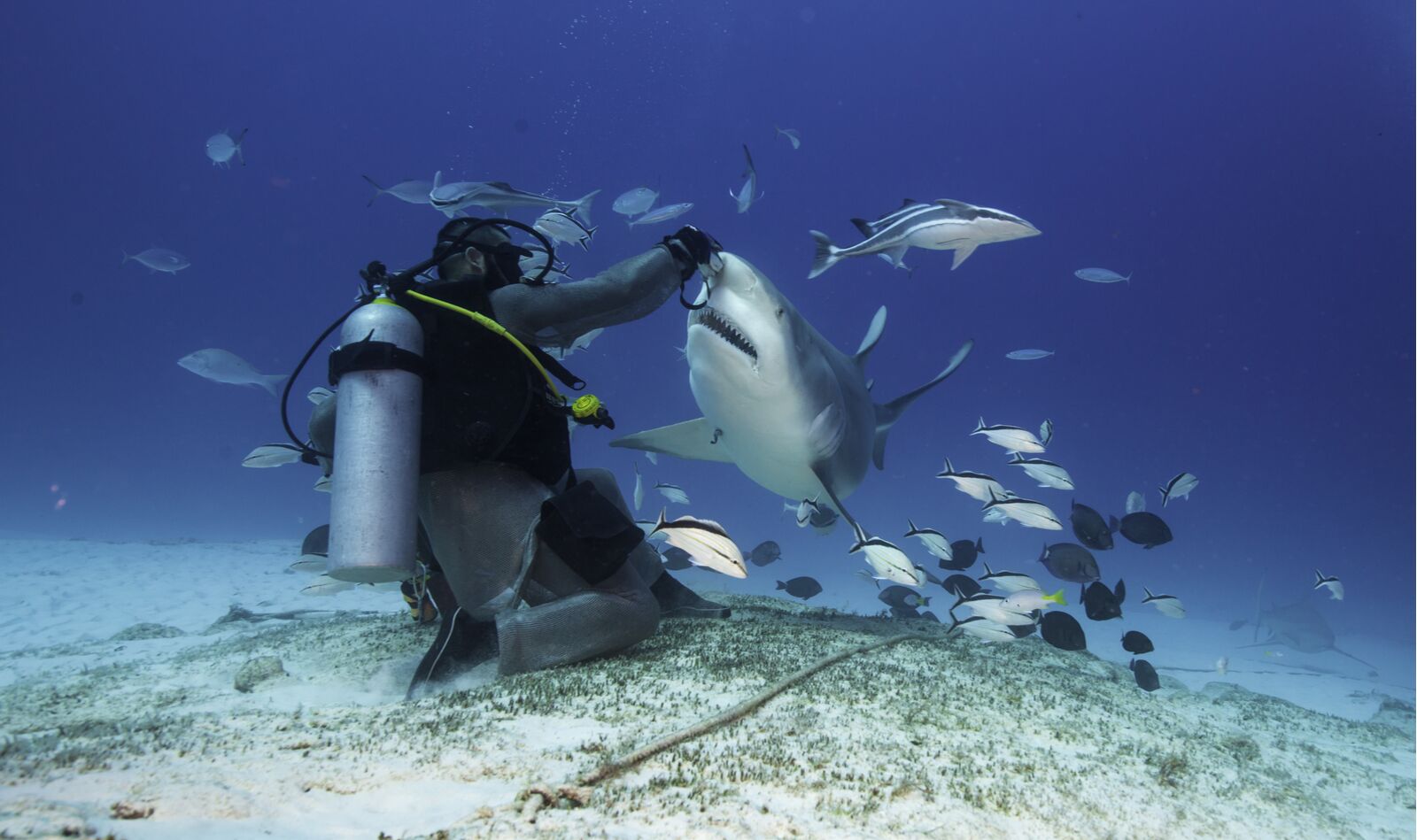“have you ever had anyone freak out underwater when they see the sharks?” I ask Sean-Douglas Brand of Blue Life Divers. “Like, they just panic and totally forget what to do?”
“Actually, no,” he says. “But sometimes you look at their masks and you can see their eyes just bugging out.”
Brand is a divemaster with Blue Life Divers, based in Playa del Carmen, just south of Cancún, Mexico. The company runs an extensive list of dive-related activities, from reef and cenote dives for certified divers to classes and snorkel trips for non-certified divers. But between mid-November and mid-March, a huge number of their dives are dedicated to scuba diving with sharks: getting divers in the water with bull sharks, one of the most aggressive shark species in the world. Oh, and sometimes they’re feeding, too.
